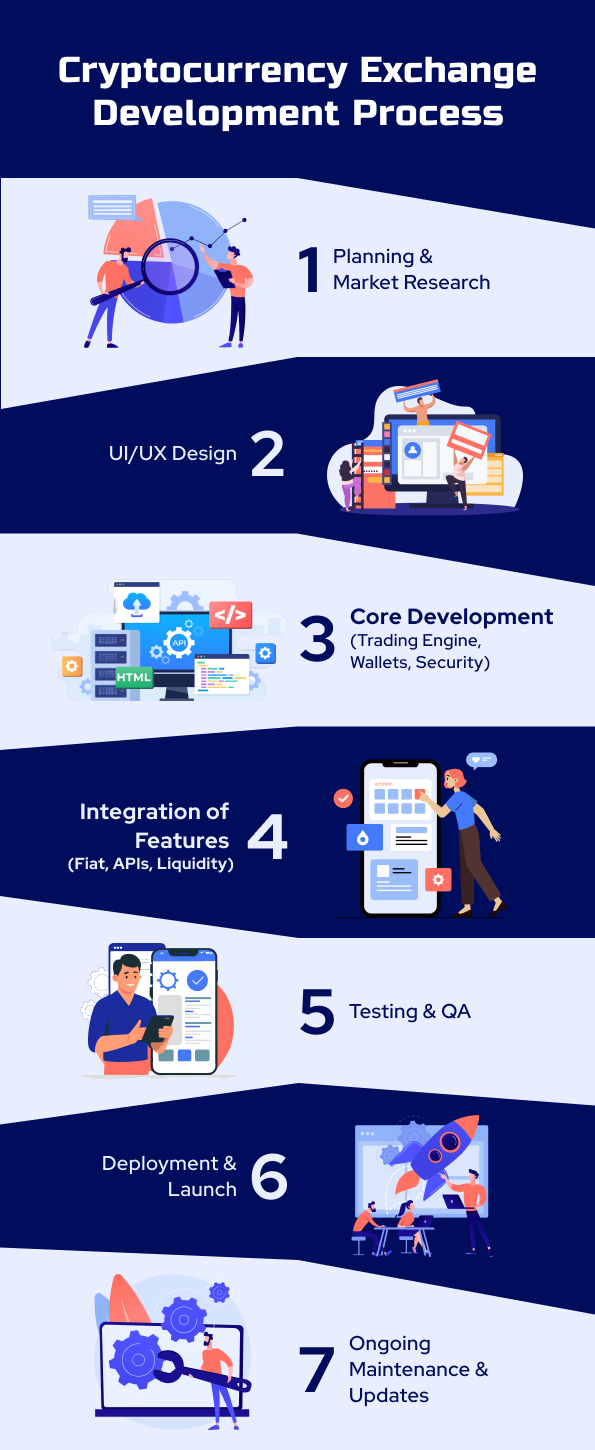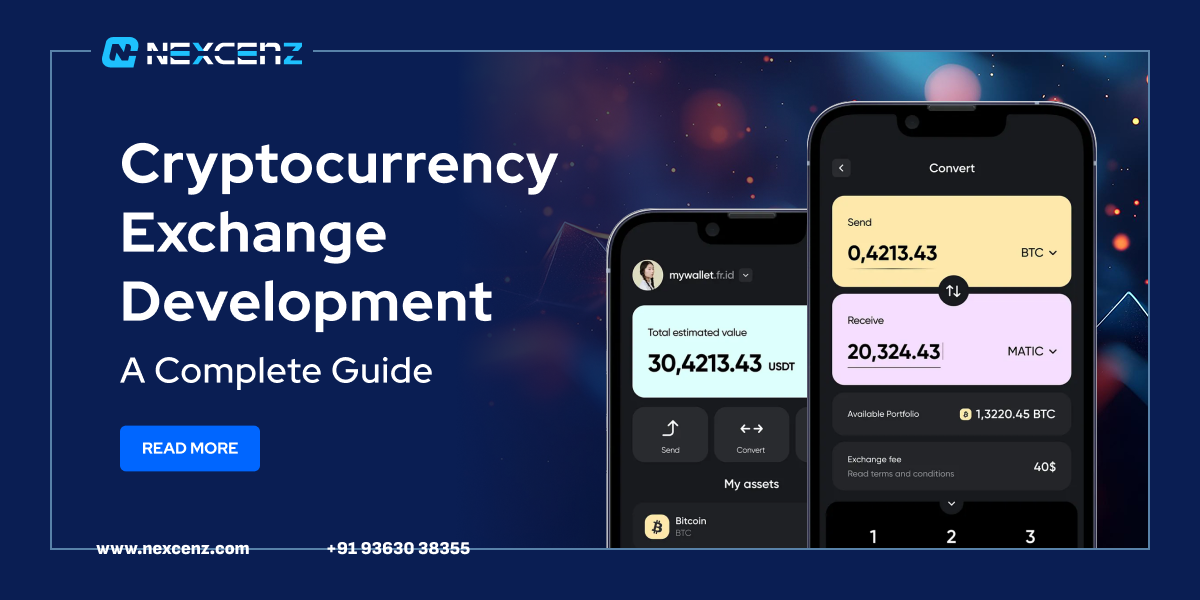Introduction
Cryptocurrencies have moved from niche technology to a global financial trend. With more people trading Bitcoin, Ethereum, and other digital assets, the demand for secure and scalable crypto exchange platforms is rising. For startups, enterprises, and blockchain projects, cryptocurrency exchange development offers a structured way to create platforms that handle trading, security, compliance, and user experience efficiently.
What Is Cryptocurrency Exchange Development?
Cryptocurrency Exchange Development is the process of building a digital asset trading platform where users can buy, sell, and exchange cryptocurrencies. A well-developed platform usually includes:
- A high-performance trading engine for processing transactions.
- Multi-currency wallets for safe storage of assets.
- An admin panel to manage users and monitor activities.
- Compliance tools for KYC (Know Your Customer) and AML (Anti-Money Laundering).
The goal is to deliver a secure trading environment that balances speed, functionality, and trust.
Types of Cryptocurrency Exchange Development
Centralized Exchange (CEX)
- Managed by a single company or operator.
- Offers high liquidity and fast order execution.
- Examples: Binance, Coinbase.
Decentralized Exchange (DEX)
- Peer-to-peer crypto trading without intermediaries.
- Funds remain in user-owned wallets.
- Popular for transparency and security.
Hybrid Exchange
- Combines the liquidity of centralized exchanges with the privacy of decentralized platforms.
- Provides faster trades with added trust.
P2P Exchange
- Direct trades between buyers and sellers.
- Uses escrow mechanisms for safe transactions.
- Works well for regional markets.
OTC Exchange
- Designed for bulk crypto trades outside public order books.
- Helps avoid price slippage and is ideal for institutions.
Key Features of a Crypto Exchange Platform
- Trading Engine – Executes trades instantly, even during high demand.
- Multi-Currency Wallets – Supports Bitcoin, Ethereum, stablecoins, and altcoins.
- KYC/AML Modules – Verifies user identity and ensures legal compliance.
- Liquidity Management – Connects with global providers for smoother trading.
- Admin Dashboard – Helps monitor users, trades, and revenue in real time.
- Security Framework – Includes SSL encryption, DDoS protection, 2FA, and multi-sig wallets.
- User-Friendly Interface – Responsive design for both beginners and pro traders.
- IEO/IDO Launchpad – Enables fundraising for blockchain projects.
The Development Process

- Requirement Gathering – Define goals, target audience, and features.
- Architecture Design – Set up the structure for front-end, back-end, and blockchain layers.
- Core Development – Build the trading engine, wallet system, and admin panel.
- Security Integration – Add advanced encryption and compliance modules.
- Testing & QA – Run stress tests and security audits.
- Deployment – Launch on a secure server with ongoing maintenance.
Benefits of Cryptocurrency Exchange Development
Faster Launch – Structured development accelerates time-to-market.
Customizable – Adapt features for specific regions or niches.
Scalable – Handles growing user traffic and trading volume.
Secure – Built with multi-layered protections.
Multiple Revenue Streams – Earn from trading fees, withdrawals, IEO hosting, and more.
Use Cases
- Startups launching new crypto trading platforms.
- Enterprises entering blockchain and fintech markets.
- Regional platforms targeting local traders.
- Blockchain projects seeking token sales through IEO/IDO.
FAQs
Q1. How long does it take to develop a crypto exchange?
It depends on the model—pre-built scripts take weeks, while custom solutions may take months.
Q2. Is a centralized exchange safer than a decentralized one?
Centralized exchanges provide liquidity and speed, while decentralized exchanges prioritize privacy and fund control.
Q3. Can I customize features in my crypto exchange?
Yes, from UI/UX to trading pairs, branding, and liquidity options, everything can be tailored.
Q4. How do crypto exchanges generate revenue?
Through trading fees, listing fees, withdrawal charges, and premium services.
Conclusion
Cryptocurrency Exchange Development opens the door to the booming digital asset economy. By blending advanced technology, compliance, and strong security, businesses can create platforms that attract traders and build trust. Whether you choose centralized, decentralized, or hybrid models, a well-developed exchange ensures scalability, security, and profitability.



